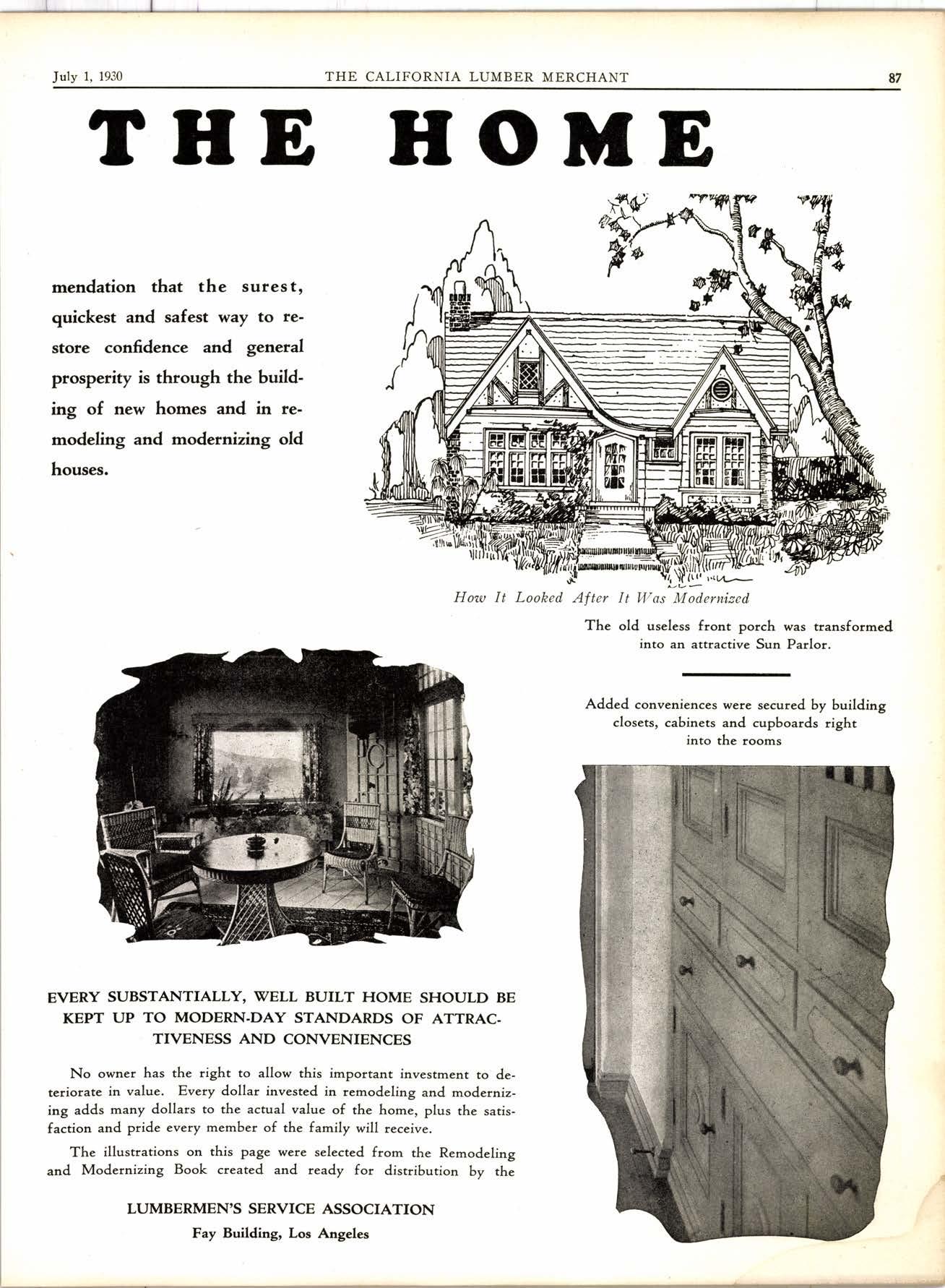
1 minute read
The Lurnberrnon3 Side of ConscrYatron
By Jack Dionne Publisher, The California Lumber Merchant
Reprinted from Pickwick Papers, May, 1930
February Pickrvick Papers told a story of California Redwood, its history, its beauty and majesty, and the preserving for future generations of great stands of this beautiful tree, which grows nowhere else on earth.
This is the other side of the story, the economic side, the commercial sicle, the Service side, if you please.
Let the average human stand in a grove of giant California Redwoods, and there creeps over him a great sense of awe, of r.vonderment, at these great torvering works of the Creator rvhich have stood so long and majestically upon the hills of California. That same impression, that same sentiment, that same sense of exaltation comes to the lumberman himself . Yet he cuts these trees. With sawand axe he invades these age-old forests, and these giants of the forest world come crashing to the earth. Why?
Remember this always : a forest is just a crop of trees, that may well be likened to the crop of corn, or wheat, or any fruit or vegetable in the grower's field. The wheat in the field develops, matures, ripens, and must be harvested at that proper time rvhen it is best fitted to serve the purpose of rnankind.
Below are tlte llcdzuoods in their natural state. In the center are stribing samples of the huge boards that can be cut only front the big Eunhs of redwoods. And at the right, the finished product of the redwood forest, in th.e fornr of wa*-finished, redwood panel- ' ing and ceil'ing.
That is also true of trees. But the life of the tree is longer than that of the farm crop. It takes from fifty years upward for a tree crop to mature, various kinds bnd species requiring various terms of years. Yet, like the crop of wheat, if not harvested when in the fullness of its ripeness and usefulness, it deteriorates, finally decays, and loses its usefulness and its possibilities of service. This is particularly true of most of our softrvood trees. As a matter of fact a very large percentage of the grand-looking forest trees of the West are already over-age and should have been harvested long ago to save rvaste.
The life of the Redwood is greater than that of anyother trei and therefore the necessity for cutting before deterioration takes place ii not as pertinent as rvith the ihorterlived species. Florvever, the economic necessity for cutting them is
(Continued on Page 20)










